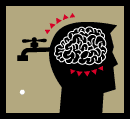
Indian Mindskills
DIVERSITY
THE KEY TO CREATIVITY AND INNOVATION
By now, you would certainly have heard of words like divergence and diffusion in the same breath with creativity and innovation. If not, you have been listening to the wrong people.
What is the role of diversity in creativity?
There are three types of creativity. The child’s creativity is largely representational. The scientist’s is abstractive and inferential. The designer’s creativity is primarily elaborative. Here we are talking of elaborative creativity.
It is primarily a combinatorial process. Consider a pressure cooker full of various ingredients for a good meal, on fire. The various contents in it mesh with one another and produce something new. Addition of a new vegetable or a spice can completely change the resulting dish.
Generativity theory of creativity holds that ideas, thoughts and actions are in constant competition in our nervous systems. One outcome of this dynamic process is a steady stream of new thoughts. By changing the number and type of thoughts that compete, we can accelerate the creative flow and direct it in desired ways. The combinatorial process is predictable and orderly.
Think of a kaleidoscope – that little tube containing pieces of broken bangles and having lenses on both ends. You look from the viewing end and see a beautiful mosaic pattern at the other. Rotate it even slightly and the bangle pieces rearrange themselves instantly. You get a totally different outcome. Add another piece of bangle to the collection and the pattern changes again. Each time, it is different .
It seems that the trick lies in introducing new pieces of broken bangles at regular intervals and then rotating the kaleidoscope. But, do we do that with our lives?
Our ‘ordered and srtuctured' lifestyle allows us very few opportunities to introduce new elements in the kaleidoscope. I always wear light colour shirts and sober colour trousers, take the colony bus to the railway station, take the 7.43 train to town, hang out with retired army officers and read only the Indian Express newspaper. My eating habits are so orderly that the waiter doesn’t even bring the menu. He brings the meals directly. In such a scenario, where will new elements come from? If some day I get adventurous and wear a bright T-shirt with faded jeans, maybe some pretty young thing will strike up a conversation with me. I surely won’t have to hang around with retired army officers any more! Maybe a young pianist feels comfortable to strike up an acquaintance with me. Maybe he talks to me about symphonies and musical notations and I see some way I can use that concept in my training programs.
If I take another bus to the station, take the 7.53 train instead of the usual 7.43 one and read the Midday newspaper instead of the Indian Express, I increase the chances manifold to introduce new elements in my life. Change the input ; change the output.
When was the last time you did something for the first time?
If you always do what you’ve always done, you’ll always get what you’ve always got.
Do not underestimate the power of miniscule quantities of new inputs to bring about major changes in the process. A spoonful of lime juice is enough to curdle all the milk.
More and more, innovation is springing not from particular industries or disciplines, but rather across them, says Frans Johansson, author of The Medici Effect: Breakthrough Insights at the Intersection of Ideas, Concepts & Cultures. "When you step into an intersection of fields, disciplines, or cultures, you can combine existing concepts into a large number of extraordinary new ideas."
To bring you a new idea, whose wisdom do you bank upon? The departmental head and his 5 subordinates? IBM have recently undertaken an open innovation event or Innovation Jam as they call to collect ideas from some 100,000 minds, including employees, consultants, employees families and 67 clients from the Bank of America to Massachusetts Institute of Technology. By tapping into the wisdom of crowds, IBM are looking to transform industries, alter human behaviour, and ultimately lead IBM to new business. ( http://imaginatikresearch.blogspot.com - entry 22 Aug 2006). We are seeing more and more companies embracing open innovation strategies to engage people through their various partnership networks, from employees families, retirees, clients, and suppliers to name but a few.
Give yourself a chance. De-pattern your mind. Get new perspectives. Limited perspectives limit the way you view the world. If all that you have is a hammer, you tend to see every problem as a nail.
In addition to opening yourself up to new experiences, you can consciously pick up a concept at random and graft it to yours and see what comes out. Techniques are today available for it.
If I, who for 26 years lifted my left foot only when they barked 'LEFT', can talk of creativity, any one can. This is the era of technique and tool based creativity.



